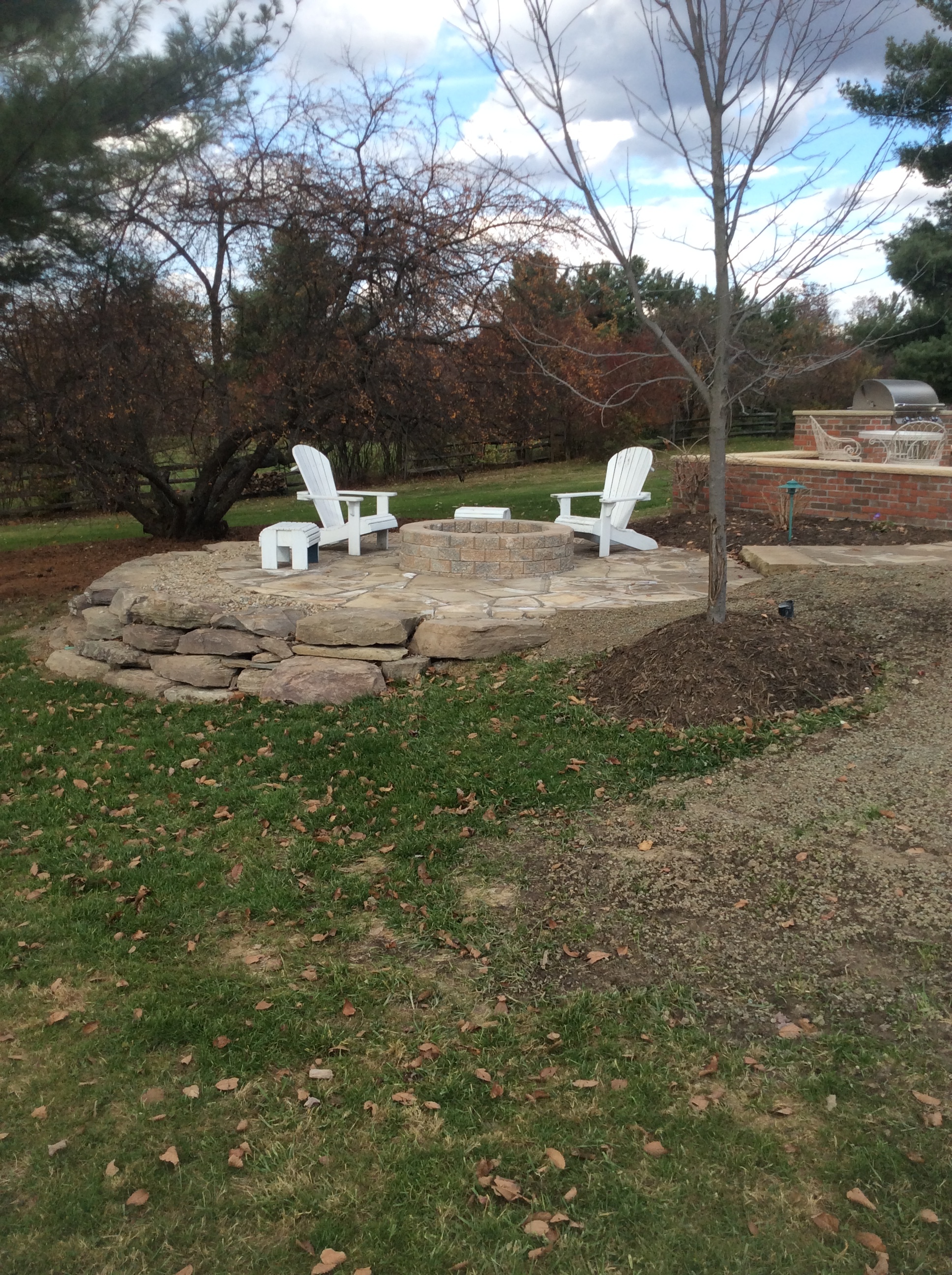Retaining walls were originally designed to hold a vertical face of soil in place and prevent it from slumping to form a more natural slope in order to aid agriculture. While they are still used to achieve this, they can also be used to raise plant beds and living spaces, adding further dimension to flat landscapes. They can also function as seat walls and handy surfaces upon which to place snacks and drinks. These show-stopping verticals can also add a great deal to the overall aesthetic of your landscape, depending on their layout and material selection. Here are a few tips to make the most of curved retaining walls in Hunting Valley, OH:
Create a collection of terraces
Curved retaining walls can have a stunning, hypnotic appearance. When adding these fluid structures to your landscape, the principle ‘more is more’ often applies. Rather than creating one long stretch of wall at the base of a large slope, consider numerous walls at various levels along the height of the slope. This will create small individual terraces with curved edges, perfect for plantings. An untamed slope can be refined by transforming it into several level terraces, while the material you’ve selected for your retaining walls will be allowed to take center stage.
Related: Beautify your Landscape Design with Pillars and Walls in Pepper Pike, OH
Ensure proper drainage
Retaining wall damage is often caused by the accumulation of sub-surface water just behind the wall. This accumulation of water exerts pressure on the wall that may cause it to crack or bulge, creating the need for costly repairs. It is, therefore, essential to have a proper drainage system in place. Your contractors may opt to backfill the area behind your retaining wall with stamped gravel or create weep holes, as these are two simple and effective solutions. Regardless of the method they choose, your J.F.D. Landscapes Inc. contractor will make sufficient provision for the drainage of water behind your curved retaining walls to keep them looking crisp and refined for years to come.
Pick the right materials
Curved retaining walls are wonderfully versatile and can complement both traditional and contemporary hardscapes. It is important, however, that the materials you select for your retaining wall suit your existing hardscape equally well. Rustic homes and hardscapes, for example, can be accented by curved stone retaining walls comprised of rugged stones or boulders in irregular shapes and sizes. Concrete wall units with a rustic appearance are also a good option, however, you should be certain that the wall units you select will be able to facilitate the curves you desire for your walls. Consult your contractor to determine whether a particular product is well-suited to curved retaining walls or not.
Don’t forget to top them off
Capstones are an essential finishing touch to any retaining wall. They prevent the penetration of water through the top surface of the wall, where it might cause damage. They also prevent harsh elements like sun and snow from damaging retaining walls. Not only do capstones (or coping) serve an important functional role in the structure of retaining walls, but they also contribute a great deal to their appearance. Capstones can be acquired in a wide range of colors, textures and finishes to suit any particular retaining wall design. Coping also presents an opportunity to add attractive accents to your design. This small, yet crucial, addition to your retaining walls should not be overlooked as it may offer that touch of character needed to take your design a step further.
Related: 5 Retaining Wall Designs for Your Sloped Yard in Bainbridge Township, OH

